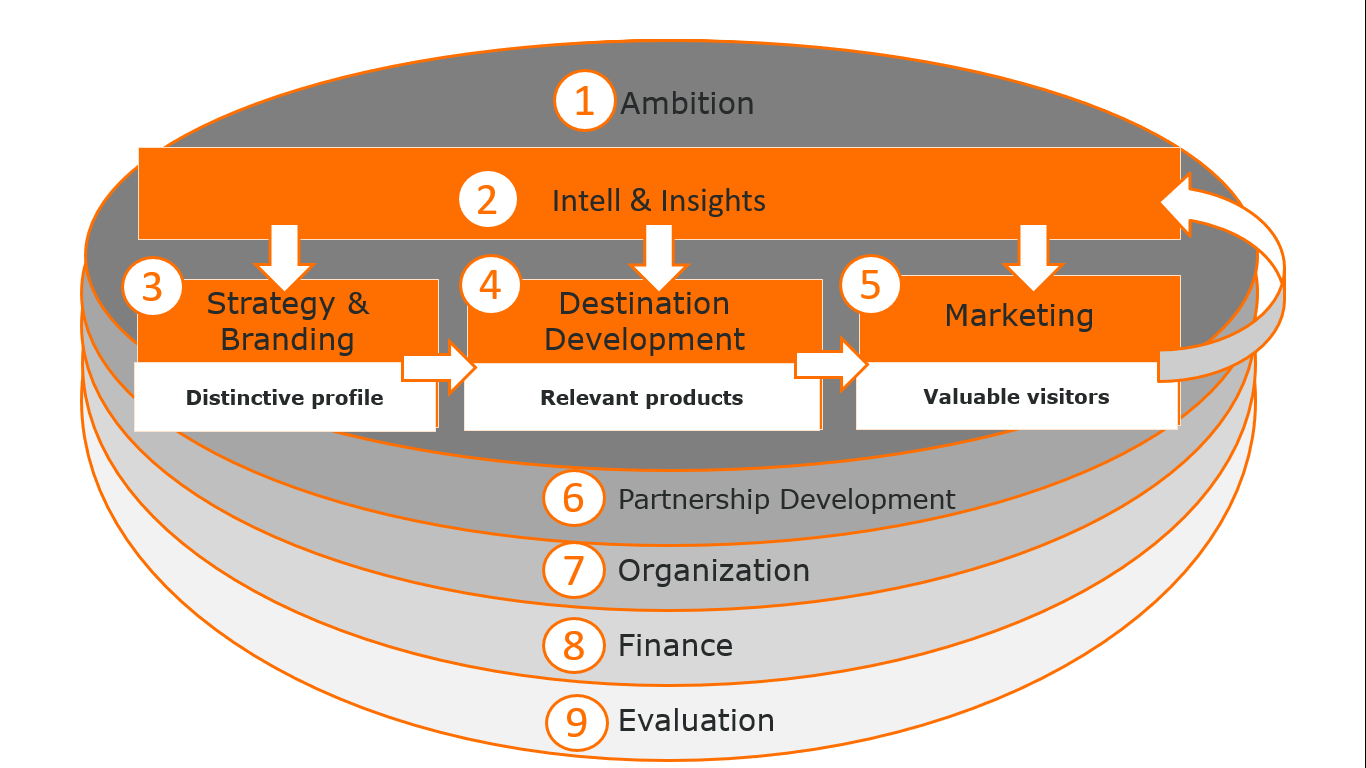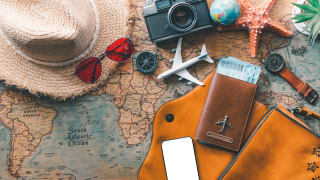Will your recovery plan be sustainable?
Who would have thought that over-tourism wouldn’t be one of the major challenges facing destinations in 2020? Three months ago, we would have laughed at the idea that in peak season the streets of Venice, Amsterdam or New York would be empty – now, we’re facing the notion that it could be months or even years before tourism returns to its previous levels.
However, as destinations plan for recovery, we would argue that it’s essential not to forget these previous concerns in a rush to restart our economies. We should not lose sight of these longer-term challenges and sustainable goals. As Edward Norton, UN Goodwill Ambassador for Biodiversity, said: “Development that’s not sustainable is not, in fact, development. It’s a short-term loan against a long-term debt to the future.”
We’ve noted over the years that more destination marketing organisations are transforming themselves into destination management organisations and like many other areas, this is a trend that we’re seeing accelerate as we adjust to a COVID-19 world. We’ve got a real opportunity right now to rethink our approaches to tourism and embed a sustainable approach into our long-term strategy – but how can we create a framework that helps to ensure we make sustainable decisions?
The language challenge in place branding
Before we begin, let’s talk terminology. What people mean by ‘sustainable’ can be vastly different – and is often specific to an environmental perspective. While this is certainly par t of our definition, as place branders, we’d suggest it’s important to look beyond this.
“I think this crisis really underlines the importance of taking a holistic approach, of including a triple bottom line – environmental, economic and social” suggested Nanna Thusgaard, Senior Manager for Sustainable Tourism Development at Wonderful Copenhagen. “Especially now when we’re seeing more than ever the importance of social and economic sustainability.
So perhaps when we talk about “sustainability” we could equally be talking about “resilience” against future crises, and also about “equitable economic development”.
The key is to ensure that we’re clear not just with our messaging, but with our behaviours. If we want to create real impact on that triple bottom line, we need concrete actions and policy reforms that can support longer-term change. And to help ensure that we keep sustainability at the forefront of our decision-making, it’s crucial to have a clear framework that helps provide that longer-term view.
Doughnut Economics: an alternative model for economic growth
In 2012, Kate Raworth, an English economist working for the University of Oxford and the University of Cambridge, proposed an alternative to growth economics – the doughnut model. Put simply [and this video is a good starter explanation], the doughnut model looks for ways that we can meet the means of all within the means of the planet. To ensure that everyone lives with access to education, water, housing in a fair and just society – but without overstepping the planetary boundaries.

Image courtesy of Kate Raworth
Raworth challenges us to move beyond a reductive and damaging pursuit of economic growth and to create more sustainable progress that allows both us and the planet to prosper. Currently, we breach both of the hard lines that Raworth lays out. Billions of people still live with the doughnut’s ‘hole’ without meeting their basic human rights. On the other side of the economic spectrum, we’re over-taxing the Earth’s resources and pumping out polluters in quantities the planet can’t handle. Measuring success through GDP is becoming unsustainable.
There are several countries who have moved to alternative metrics to determine success. Bhutan famously measures prosperity through ‘Gross National Happiness’. Jacinda Arden unveiled New Zealand’s ‘well-being budget’ in 2019 to gauge longer-term impacts on quality of life rather than focussing on short-term output measures. Scotland is seeking to create an economy that aligns citizen wellbeing with GDP when it comes to determining success. But how could Raworth’s model of sustainable economics be applied to a city?
Amsterdam’s change of direction for recovery
We’ve referenced Amsterdam once already. Pre-COVID-19, Amsterdam was at the forefront of global conversations on over-tourism – both due to their experience of the phenomena and how they handled the challenge.
“When I started in 2006, we aimed for more visitors, more inhabitants, more businesses, more conferences etcetera etcetera to become this liveable, prosperous metropolitan area. Because at that time, growth was good,” Geerte Udo, CEO of amsterdam&partners, explained at our Global conference in November. “Now we said, the residents are the priority. If you look at the reasons for cities and places to be, they’re there to live and to work. And if you do it very well, you attract visitors that bring profit for your locals and businesses. And that is still of value – but you have to make sure that you attract the right visitors, and the right businesses, so they add value. And the biggest shift is that value is not only money.”
Even before coronavirus hit, Amsterdam was working to reframe their decision-making to promote a longer-term resilience, and the city is taking advantage of this global pause to implement a more detailed framework. Working with Kate Raworth, the city has been plotting what the city’s economic recovery will look like in a post-COVID-19 world.
“The doughnut does not bring us the answers but a way of looking at it, so that we don’t keep on going on in the same structures as we used to,” explained Deputy Mayor Marieke van Doorninck to the Guardian.
Housing, for example, has been an increasingly pressing issue for the city – but the doughnut model highlights that importing building materials is a key contributor to their excess carbon dioxide emissions. While the city intends to implement regulation to promote the use of recycled and bio-based materials, the model encourages policymakers to look for alternative solutions than simply building more houses.
A sustainable framework for sustainable destination management
Jos Vranken, Managing Director at NBTC Holland Marketing, proposed an alternative model for destination management at the 2019 City Nation Place Global conference, highlighting the plates that his organisation was spinning.

Image courtesy of Jos Vranken, NBTC Holland Marketing
By focussing on having greater insights, the DMO is able to develop relevant tourism products which are grown naturally from existing area personalities, and then attract valuable visitors – all of which feeds back into having more insights to continue refining the process.
Cape Town sit on the opposite end of the tourism spectrum to the Netherlands, with a low visitorship for their potential capactity. But in order to develop their destination, they’ve leveraged a similar model to create new tourism products. “We started by going into the community to identify the product, train up tourism operators and facilitators and then packaging it as a ‘route’ in the community,” Leigh Dawber, CMO at Cape Town Tourism stated – but there’s more to it than applying a cookie-cutter solution.
“All our districts saw the success we had and wanted to leverage this new model in their district to become a viable tourism destination – but it’s not always possible. Half of these areas don’t have any tourism product at all. So we put together a research model to identify whether areas were ready for tourism or not – looking at everything from product, to capacity, to local sentiment. If the local community isn’t on board, we can’t touch it.”
Likewise, Cyprus is looking to grow their experiential tourism in order to create a more sustainable tourism model. "It's a great opportunity to change and start seeing tourists not as numbers with a dollar sign on the head, but as our guests who we will welcome into our homes and whose visit will be an experience for both the host and the guest," explained Philippos Drousiotis, Chairman of the Cyprus Sustainable Tourism Initiative.
Six key areas to address when creating a sustainable framework
A sustainable strategy will be different for every destination as every place has different priorities and pinch points, but there are some commonalities. “Destination management urgently requires a new mandate that utilises different performance indicators and emphasises community needs and benefits,” explained Jeremy Sampson, CEO of the Travel Foundation. “That mandate will require different data and enhanced skillsets to understand and address the impacts of tourism, collaboration around managing shared assets, and innovative financing mechanisms
There are six key areas that all places need to address to create an authentic sustainable strategy…
1. Data/monitoring
Destinations need to underpin decision-making with holistic data sources that fully account for tourism’s impact – including the invisible burden that tourism adds to a place. Like GDP, a focus on metrics like bed nights pushes for unsustainable growth – so how can we move beyond these to more sustainable metrics.
2. Strategic planning/policy
This needs to involve the public and private sector and crucially, provide community representation and meaningful engagement with local people who have a real stake in how tourism develops for the future. But it also needs to shift the sustainability conversation from micro to macro level; banning plastic straws is a drop in the water. How can we implement sustainable growth through policy?
3. Product development
We’ve touched on this in Cape Town’s approach - investing in competitive and high-quality tourism products that bring the greatest net-benefit to local communities is essential.
4. Skills and entrepreneurialism
Local companies are the key to creating a differentiated place brand identity and supporting and encouraging innovation in SMEs will help ensure their long-term future. And implementing SME-friendly procurement policies will help to grow your local economy.
5. Finance
By better understanding tax allocation, destinations will be able to attract new investment based on achieving sustainable outcomes. Take Costa Rica, who have embedded sustainability at the heart of all their operations. Karin Lachner, Head of Marketing at CINDE, Costa Rica’s Investment Promotion Organisation explained that they look to drive their sustainable productivity with a focus on “investment with purpose which gather greatest relevance in this context, focusing on people, planet and prosperity.”
6. Marketing, promotion and partnerships
Destinations need to support a strategy that optimises the visitor economy for community net-benefit, while still delivering high quality experiences for tourists. For many, that means marketing your city or country to attract your target visitors. For some, like Amsterdam, that may mean suspending all international promotion to focus on an in-city campaign to encourage better behaviour from tourists.
Sustainability and advocacy in recovery planning
Following COVID-19, there are two areas that are of increased importance. One is to support SME capacity building as they have been some of the hardest hit in the global lockdown. The other is the need to engage the community with your strategy.
UNWTO have been promoting #TogetherInTourism as a campaign to nurture wanderlust while we’re confined to our houses, but does this lose sight of educating people to be responsible travellers? The sentiment is admirable, but we are at risk of losing an opportunity for education and longer-term change if we are jump the boat in trying to revive the tourism industry. And it also overlooks the greater advocacy piece that will be needed.
Even if people are recognising the importance of tourism to the global economy, communities may not be ready to welcome tourists back even after borders reopen. Keeping an open dialogue with your citizens and having community representation will help ensure your local residents and companies are on board with your strategy. Advocating for tourism is essential.
Global responsibility
This is a global challenge – and it needs tackling globally. Collaboration between destinations as well as your local stakeholders will help establish a transparent set of industry standards for sustainability – and enable us to hold places accountable for failing to meet basic targets.
But it’s also an opportunity to engage people on an individual level. The COVID-19 pandemic is possibly the first time in centuries that Western society has been encouraged to think of themselves as a cog in a machine working towards the greater good of the community.
“We’ve seen that on a political level, it’s incredible how much can be done when it’s needed,” mused Nanna Thusgaard. “And looking at the environmental crisis we’re still facing right now, it could be interesting to see if policy makers could ride on this wave of good decisions and when we’re gradually opening again, we could hopefully keep some of the restrictions in hand.”
We can take this moment of global camaraderie to promote more sustainable lifestyles. Rather than resuming business as normal once the crisis has passed, we could all re-evaluate what it means to be a good global citizen and how to act and travel responsibly. But as much as we need this bottom-up approach, true sustainability needs to come top-down as well. How we choose to act as destination marketing and investment promotion organisations will be critical in determining the future of the world.
Is Your Recovery Plan Future-Proofed?
City Nation Place teamed up with leading sustainable tourism charity, the Travel Foundation, to offer four DMOs expert pro bono support as they develop their COVID-19 recovery plans. The Travel Foundation will review and strengthen these plans with a focus on increasing opportunities for community livelihoods, strong and resilient local supply chains, resource protection, and overall destination management capacities, drawing on nearly two decades’ experience globally.
Discover the outcome to the Roots to Recovery taskforce here.
Related reading
The roadmap for sustainable recovery
9 'Stay Home' campaigns that are rooted in place DNA
Beyond marketing: How DMOs and EDOs are evolving their role during COVID-19
Papatūānuku is Breathing: how Māori values underpin Auckland's sustainable destination management









